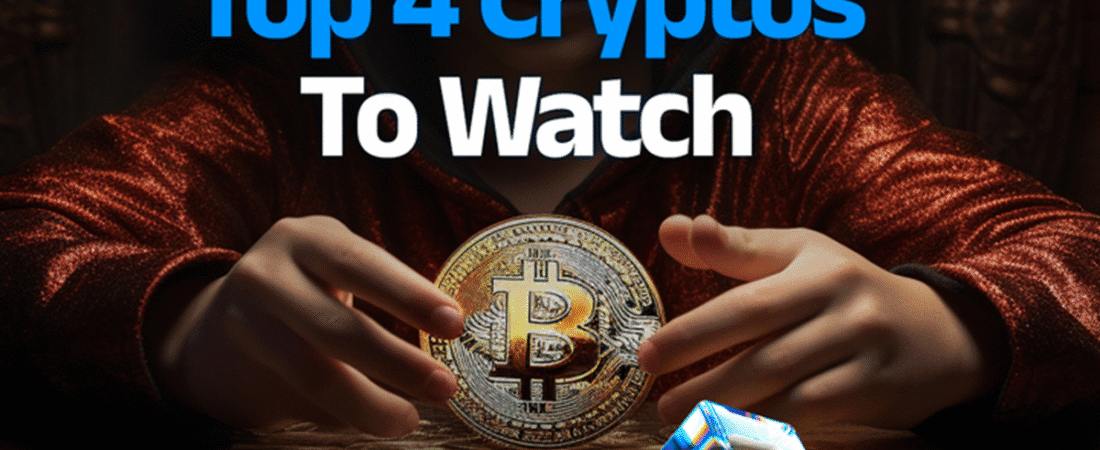Next Crypto to Explode in 2025: In-Depth Analysis of BlockDAG, Ethereum, Solana & Bitcoin Hyper’s Market Potential
18 Aug



Next Crypto to Explode: Strategic Analysis of BlockDAG, Ethereum, Solana & Bitcoin Hyper
Executive Summary
- BlockDAG is redefining Layer 1 crypto infrastructure by merging the scalability of Directed Acyclic Graph (DAG) technology with Bitcoin’s robust Proof-of-Work (PoW) security—delivering high throughput, decentralization, and security.
- Ethereum maintains its role as the primary smart contract platform, propelled by continuous scaling upgrades, though it faces cost and speed competition from rivals.
- Solana’s ultra-fast consensus and low fees attract high-volume DeFi and NFT applications, but it continues to battle with reliability and security incidents.
- Bitcoin Hyper emerges as a next-generation Bitcoin fork. Its focus is on high-speed transactions while preserving Bitcoin’s core value tenets, aiming to challenge Bitcoin’s limitations.
- Presale momentum has enabled BlockDAG to raise $342 million and secure over 200,000 holders before mainnet—signaling significant market confidence and disruptive potential.
BlockDAG: Transforming Layer 1 Through Hybrid Architecture
- BlockDAG is pioneering a hybrid, next-generation Layer 1 protocol by integrating DAG and PoW, addressing the trade-offs seen in legacy platforms. The result is a blockchain able to process 2,000–15,000 transactions per second without undermining decentralization or security.
- BlockDAG’s architecture enables rapid, parallel block production and confirmation—meaning the network is resilient under transaction surges and avoids congestion issues typical in linear blockchains.
- Strategically, BlockDAG positions itself as indispensable infrastructure for decentralized applications (dApps), DeFi, and enterprise adoption, thanks to:
- Lightning-fast transaction processing
- EVM compatibility, allowing seamless deployment of Ethereum-native smart contracts
- Low-code developer tools that flatten the onboarding curve for new projects
- Market traction is immediate: BlockDAG’s $342 million pre-launch fundraise, over 200,000 individual holders, 2 million+ X1 app miners, and confirmed listings on 20 exchanges demonstrate clear institutional and retail investor conviction.
- BlockDAG’s flexible, miner-driven fee structure and cost-effective transaction model address scaling pain points (fees, energy efficiency, and decentralization), bridging the gap for mass blockchain adoption.
Ethereum: The Established Smart Contract Leader Under Pressure
- Ethereum continues to anchor the smart contract ecosystem as the highest activity chain, benefiting from first-mover advantage, the largest dApp library, and ongoing infrastructure upgrades.
- Despite its strengths, Ethereum faces rising threats from next-gen protocols on costs and speed, particularly as institutional and mass-market uses demand faster, cheaper, more predictable settlement.
- Ethereum’s roadmap prioritizes scaling (e.g., through sharding and rollups) and sustainability, but the pace of innovation in competitors like BlockDAG and Solana is accelerating, challenging Ethereum’s dominance.
- The strategic implication for Ethereum: maintain developer loyalty and expand the platform’s efficiency, or risk user and capital migration to faster, lower-cost alternatives.
Solana: High Throughput, Bumpy Road
- Solana captures developer and user mindshare by combining sub-second block finality and ultra-low fees, making it a go-to for DeFi protocols and NFT platforms requiring high-volume, low-latency performance.
- However, reliability and periodic network outages have historically undermined confidence and highlighted the trade-offs of its aggressive scaling design.
- Solana’s continued growth relies on finalizing its infrastructure and ecosystem maturity. The platform’s ambition to be the fastest smart contract Layer 1 is largely realized, but must be counterbalanced by ensuring robust uptime and security.
- Strategically, Solana is positioned as the platform of choice for real-time financial and digital asset transactions, but must stabilize network performance to attract further institutional investment and mission-critical use cases.
Bitcoin Hyper: Reimagining Bitcoin for Speed
- Bitcoin Hyper is a fork aiming to address Bitcoin’s long-standing speed and throughput bottlenecks by integrating faster block times and higher capacity per block without diverging from Bitcoin’s security-centric ethos.
- This approach enables Bitcoin Hyper to position itself both as a peer-to-peer digital asset and a foundation for applications that require real-time settlement, unlike legacy Bitcoin’s deliberately slow, conservative pace.
- For institutional and fintech participants, Bitcoin Hyper’s value proposition is the familiar security model of Bitcoin—augmented with transactional efficiency and scalability for modern use cases.
Comparative Strategic Table: BlockDAG, Ethereum, Solana, Bitcoin Hyper
| Protocol | Key Strength | Core Differentiator | Strategic Implication |
|---|---|---|---|
| BlockDAG | High throughput, hybrid PoW-DAG, EVM compatible | Parallel block confirmations, $342M presale, rapid adoption | Viable contender for mass adoption and dApp scalability |
| Ethereum | Smart contract pioneer, largest ecosystem | Ongoing upgrades, Layer 2 scaling integrations | Upgrade speed must match growing competition |
| Solana | Ultra-fast, low cost, active DeFi/NFT scene | Sub-second finality, network outages challenge confidence | Market leader for speed; reliability upgrades required |
| Bitcoin Hyper | High-speed Bitcoin fork, secure | Familiar branding, improved transactional capability | Best fit for payments, remittances, real-time dApps |
Key Figures and Leadership Driving Innovation
- BlockDAG: The core BlockDAG executive team strategically unites blockchain veterans with DAG and PoW expertise—driving record-breaking fundraising and partner onboarding. Their roadmap emphasizes continuous infrastructure expansion, BDAG mining hardware development, and EVM-layer integration—all aimed at capturing smart contract market share from incumbents.
- Ethereum: Ethereum’s stewardship, under Vitalik Buterin’s vision, ensures relentless focus on protocol upgrades and research-driven development, reinforcing Ethereum’s position as a programmable money and decentralized finance leader.
- Solana: Anatoly Yakovenko and Solana’s leadership harness novel cryptographic and parallelization techniques, rapidly building out developer tooling and broader institutional engagement—despite needing to overcome the specter of downtime events.
- Bitcoin Hyper: The Bitcoin Hyper founding team is engineering a pragmatic evolution of Bitcoin, maintaining its security philosophy while boosting real-world utility, targeting untapped transactional and micro-payment markets.
Market Outlook & Data-Driven Strategic Takeaway
- Data from BlockDAG’s $342 million presale and over 200,000 holders pre-mainnet signals outsized appetite for next-gen Layer 1 innovation—particularly platforms that address legacy throughput, cost, and decentralization issues at scale.
- The explosive adoption of BlockDAG—outstripping many traditional Layer 1 launches in both capital raised and user base size—demonstrates a clear demand shift toward protocols with hybrid scalability, security, and developer accessibility.
- Investment Implication: Corporate and institutional portfolios should prioritize exposure to hybrid Layer 1 blockchain solutions such as BlockDAG, especially as real-world application adoption and on-chain activity continue to outpace incremental improvements in legacy chains.
Data-Driven Takeaway:
- With over $342 million in presale funds raised and 200,000+ holders secured before network launch, BlockDAG evidences one of the highest conviction investor and developer communities among emerging Layer 1 protocols in 2025.

コメントを書く